LED TVs have been popular for a couple of years and there is no sign of the slowing down of this popularity. So Why? In this article, we’ll dive into the world of LED TVs, and see what LED TV is, the edge-lit LED and full array LED, the history and benefits of LED TVs, and also recommend some best LED TVs around the world.
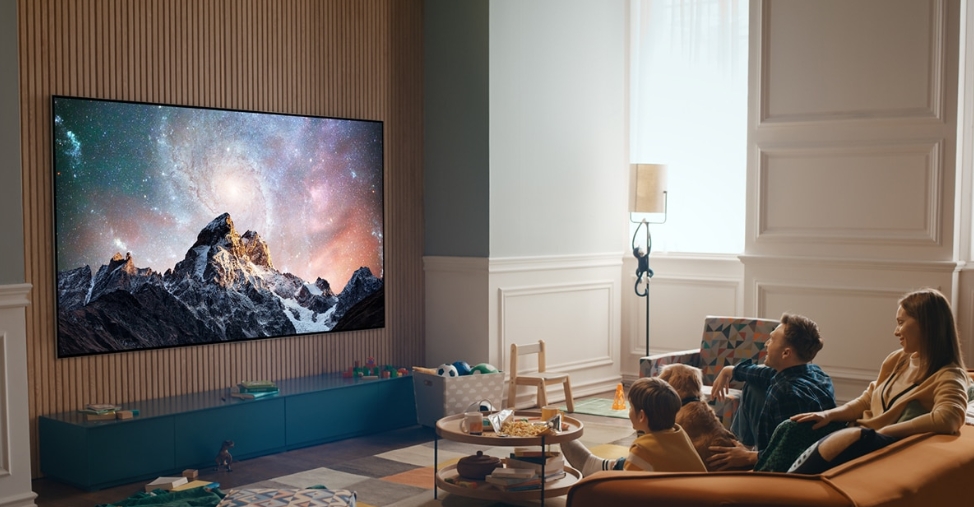
LED TV stands for Light Emitting Diode Television. It refers to a type of television display technology that utilizes light-emitting diodes (LEDs) to illuminate the screen and create the images. LED TVs are a popular choice in the consumer electronics market due to their slim design, energy efficiency, and improved picture quality compared to older display technologies.
LED TVs are essentially LCD (Liquid Crystal Display) TVs with LED backlighting. The liquid crystal layer in an LED TV controls the amount of light passing through it, and the LEDs positioned behind the LCD panel provide the illumination. This backlighting method allows for greater control over brightness levels and improved contrast ratios, resulting in enhanced picture quality.
There are two main types of LED TV backlighting:
Edge-lit LED: In edge-lit LED TVs, the LEDs are located along the edges of the display panel. Light is then distributed across the screen using a light guide panel or diffuser. This design allows for thinner and lighter TVs but may have some limitations in terms of uniformity and contrast.
Full Array LED (also known as Direct LED): Full array LED TVs feature a grid of LEDs placed behind the entire display panel. These LEDs can be locally dimmed or brightened in specific areas to achieve better contrast and more precise control over black levels. Full array LED TVs generally offer superior picture quality but can be thicker and heavier compared to edge-lit models.
LED TVs often incorporate additional technologies to enhance the viewing experience, such as High Dynamic Range (HDR) for expanded color and contrast, high refresh rates for smoother motion, and advanced image processing algorithms to optimize picture quality.
It’s worth noting that OLED (Organic Light Emitting Diode) TVs are a different display technology that uses self-emissive organic compounds to produce light and color. While both LED and OLED TVs utilize LED technology, OLED TVs offer several advantages, including individually lit pixels, deeper blacks, wider viewing angles, and thinner form factors.
Overall, LED TVs have become the predominant display technology in the television market, offering a combination of slim designs, energy efficiency, and improved picture quality for consumers.
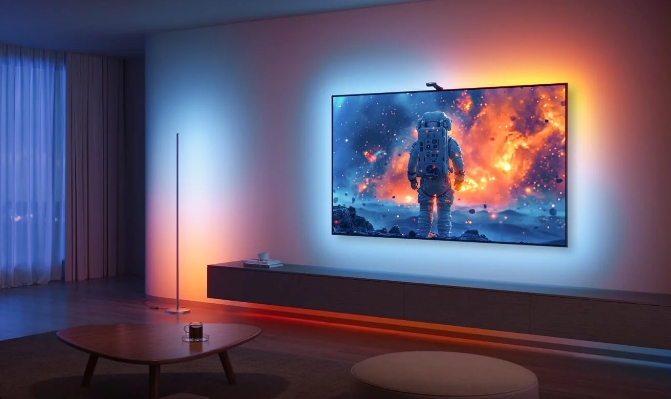
The history of LED TVs dates back to the development of light-emitting diodes (LEDs) themselves. Here is a brief overview of the key milestones in the history of LED TVs:
Invention of LEDs:
LEDs were first invented in the early 1960s by Nick Holonyak Jr., a researcher at General Electric. The initial LEDs emitted low-intensity red light and were primarily used as indicator lights in electronic devices.
Advancements in LED Technology:
Over the years, advancements in LED technology led to the development of LEDs capable of emitting different colors, including green and blue. This paved the way for full-color displays.
The first LED TV:
In1977, Mr. J.P. Mitchell invented the first true all-LED flat-panel TV.
Introduction of LED Display Screens:
In the late 1990s and early 2000s, LED display screens began to emerge. These screens utilized an array of individual LEDs to create a display. However, they were primarily used in large-scale outdoor advertising displays, scoreboards, and signage.
Introduction of LED Backlighting in LCD TVs:
The next significant development came with the introduction of LED backlighting in LCD TVs. In this technology, LEDs were used as a backlight source behind the liquid crystal display (LCD) panel. This allowed for thinner and more energy-efficient televisions compared to the previously used CCFL (Cold Cathode Fluorescent Lamp) backlighting.
Evolution of LED TV Technology:
LED TVs gradually gained popularity as advancements in LED technology continued. Manufacturers improved the efficiency and brightness of LEDs, leading to enhanced picture quality, better color reproduction, and higher contrast ratios.
Introduction of Edge-lit LED TVs:
Edge-lit LED TVs became popular in the late 2000s and early 2010s. In these TVs, LEDs were positioned along the edges of the display panel, and light was distributed across the screen using a light guide panel or diffuser. Edge-lit LED TVs offered a thinner and sleeker design compared to their predecessors.
Introduction of Full-Array LED TVs:
Full-array LED TVs, also known as direct LED or backlit LED TVs, emerged as an alternative to edge-lit models. With full-array LED backlighting, a grid of LEDs is positioned behind the entire display panel. This technology allows for more precise control over local dimming and improved contrast ratios.
Advancements in LED TV Technology:
LED TV technology continued to evolve with the introduction of features such as high refresh rates, support for HDR (High Dynamic Range) content, quantum dot technology, and improved smart TV capabilities.
Today, LED TVs have become the dominant technology in the television market, offering a combination of picture quality, energy efficiency, affordability, and a wide range of options to suit consumer preferences.
It’s worth noting that the term “LED TV” is often used interchangeably with “LCD TV with LED backlighting” to differentiate them from OLED (Organic Light-Emitting Diode) TVs, which use a different display technology.
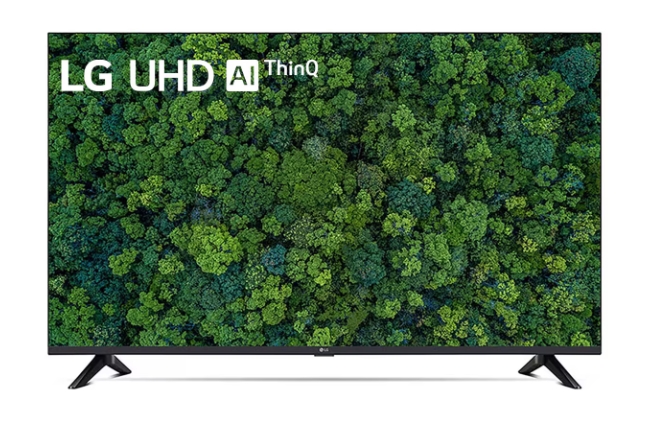
LG UHD AI ThinQ
LED TVs are popular for a lot of reasons. Here we list some common reasons why.
Picture Quality:
LED TVs offer excellent picture quality with vibrant colors, high contrast ratios, and deep blacks. This is due to the use of LED backlighting, which provides better control over brightness and enhances image details.
Energy Efficiency:
Compared to older technologies like CCFL (Cold Cathode Fluorescent Lamp), LED TVs are more energy-efficient. They consume less power, resulting in lower electricity bills and reduced environmental impact.
Slim and Stylish Design:
LED TVs have a sleek and slim profile, making them aesthetically pleasing and easy to fit into various living spaces. The thin design allows for wall mounting and saves space compared to bulkier TV models.
Durability:
LEDs have a longer lifespan compared to traditional light sources. LED TVs are known for their durability and can last for many years without significant deterioration in picture quality or performance.
Wide Range of Sizes and Options:
LED TVs are available in a wide range of screen sizes, from small TVs suitable for bedrooms or kitchens to large-screen models for immersive home theater experiences. Additionally, LED TVs come with various features and options, such as smart TV capabilities, high refresh rates, and support for advanced technologies like HDR (High Dynamic Range).
Affordability:
LED TVs are generally more affordable compared to other advanced display technologies like OLED or QLED. This makes them accessible to a wider range of consumers who are looking for high-quality TVs at a reasonable price point.
Compatibility and Connectivity:
LED TVs offer compatibility with various devices and connectivity options. They typically come with multiple HDMI ports, USB ports, and other input/output connections, allowing users to connect gaming consoles, Blu-ray players, streaming devices, and other peripherals easily.
Availability and Market Dominance:
LED TVs have become the dominant technology in the television market. As a result, there is a wide range of LED TV models available from various manufacturers, providing consumers with ample choices and competitive pricing.
Overall, the combination of excellent picture quality, energy efficiency, sleek design, affordability, and a wide range of options has contributed to the popularity of LED TVs among consumers.
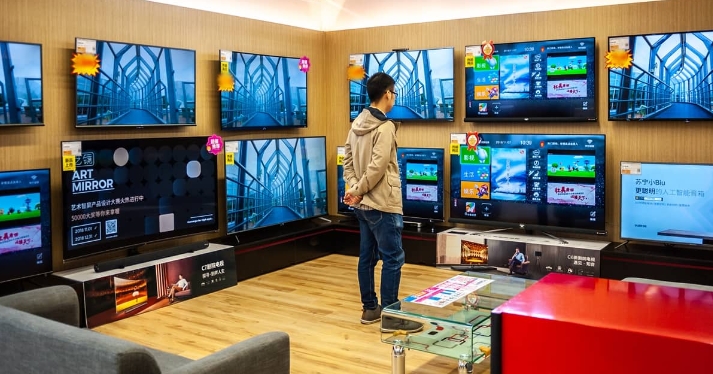
When buying an LED TV, there are several important factors to consider. Here are some key things to keep in mind.
Screen Size:
Determine the appropriate screen size based on the viewing distance and the size of the room. Consider how many people will be watching and where the TV will be placed. The sweet spot for screen size is typically between 55 and 75 inches.
Resolution:
LED TVs come in different resolutions, such as HD, 4K, and 8K. Higher resolution TVs offer sharper and more detailed images. It is recommended to go for at least 4K resolution for a better viewing experience.
Refresh Rate:
Look for a TV with a higher refresh rate, preferably 120 Hz. A higher refresh rate provides smoother motion for movies, shows, sports, and gaming.
HDR Compatibility:
Consider a TV that is HDR-compatible. HDR (High Dynamic Range) offers more realistic colors and better contrast. Look for TVs that support advanced HDR formats like HDR10+ or Dolby Vision.
HDMI Ports:
Ensure that the TV has an adequate number of HDMI ports, preferably at least four. This allows you to connect multiple devices like gaming consoles, streaming devices, and soundbars.
Sound Quality:
TV speakers are often not the best, so consider buying a soundbar for better audio experience.
Budget:
Set a budget and look for TVs that offer the best value for your money. Generally, a good budget 55-inch 4K TV can be found around $500.
Brand and Reviews:
Research different brands and read reviews from trusted sources to get an idea of the TV’s performance, reliability, and customer satisfaction.
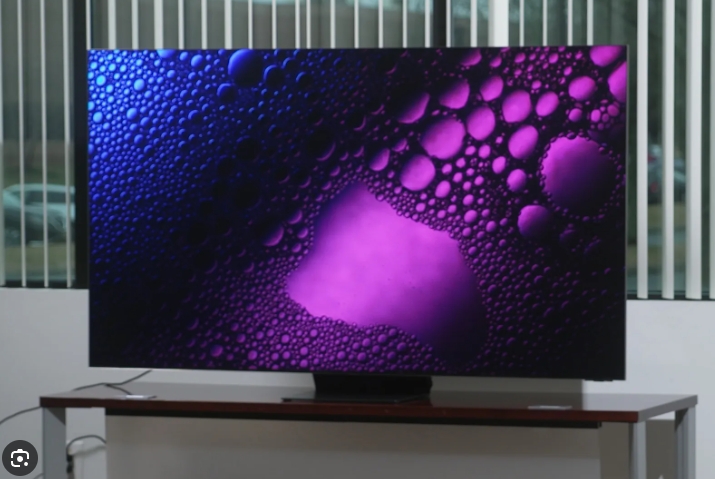
Samsung QN95C
There are a lot of famous brands manufacturing LED TVs around the world, for example, Samsung, Sony, LG, Hisense, Panasonic, etc. And of course, there are a lot of top quality LED TVs too. Here we recommend some of the best LED TVs available in 2024.
Hisense U6/U6K:
TCL QM8 Series:
Samsung QN95C Series:

Kinglight offers mini and micro LEDs
These recommendations are based on search result. It’s for sure, you can have more option on the market. While choosing the best LED TV for yourself, It’s better to take your specific requirement and preference into consideration.